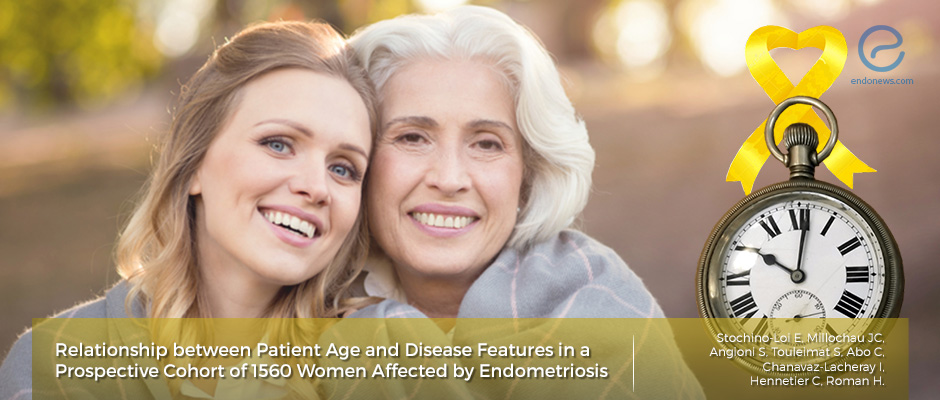Endometriosis features vs Patient age
Nov 26, 2019
Relationship between patient age and disease features in a prospective cohort of 1,560 women affected by endometriosis
Key Points
Highlight:
- Dr. Roman group provides knowledge showing that endometriosis progresses throughout the reproductive years.
- To prevent the progression of endometriosis, early diagnosis should focus on women under the age of 25 years.
Background:
- Endometriosis has a significant negative impact on patients’ daily life.
- In younger women, effective management should consider the disease progression.
- Some people believe that the severity of lesions increases with patient age.
- To assess the relationship between age and the type, stage and location of endometriotic lesions, the Dr. Roman group analyzed the CIRENDO database.
Key points:
- This cross-sectional cohort study examined 6 groups based on age.
- A (under 20), B (21-25), C (26-30), D (31-35), E( 36-40), F (more than 40 years).
- Several factors are carefully examined.
- patient characteristics, symptoms, and location of endometriosis, and type of surgery performed.
- The stage of endometriosis progressively increased from group A to group C, and no further change was observed.
- And the rate of deep infiltrating endometriotic lesions was very low in the youngest group A (under 20 years) but increased progressively.
Conclusions:
- Dr. Roman group concluded that endometriosis seems to progress from adolescence until an adult period when patients require surgery.
- Therefore, early diagnosis should be actively performed women under the age of 25 years to prevent the progression of endometriosis.
- Though this study has a large sample size and careful prospective data, the unbalanced number of patients in each category and the high prevalence of deep infiltrating endometriosis might affect the result.
Lay Summary
Endometriosis, a common gynecological disease, has significant negative impacts on patients’ daily life. Especially in younger women who have yet to achieve pregnancy, effective management should consider the disease progression. Though it is still under debate, some people suggest that the severity of lesions increases with patient age. This suggests that endometriosis lesions might grow over time. To assess the relationship between age and the type, stage and location of endometriotic lesions, the Dr. Roman group from France performed a retrospective study. This study recently published in ‘The Journal of Minimally Invasive Gynecology’.
For this cross-sectional cohort study, in total, 1,560 procedures were included which are recorded in the CIRENDO database from April 2009 until April 2014. According to the age, there were 6 categories; A (under 20), B (21-25), C (26-30), D (31-35), E (36-40), F (more than 40 years). For the analysis, several factors are carefully examined; including the patient characteristics, symptoms, location of endometriosis and the type of surgery performed.
The stage of endometriosis progressively increased from group A to group C, and no further change was observed. And the rate of deep infiltrating endometriotic lesions was very low in the youngest group A (under 20 years) but increased progressively.
This finding suggests that endometriosis develops itself throughout the reproductive years until the fourth decade.
Altogether, Dr. Roman group concluded that endometriosis seems to progress from adolescence until an adult period when patients require surgery. Therefore, early diagnosis should be actively performed women under the age of 25 years to prevent the progression of endometriosis.
This study has a large sample size and careful prospective data. However, the unbalanced number of patients in each category and the high prevalence of deep infiltrating endometriosis might affect the result.
Research Source: https://www.ncbi.nlm.nih.gov/pubmed/31518709
Endometriosis Age Progression Stage Surgery

